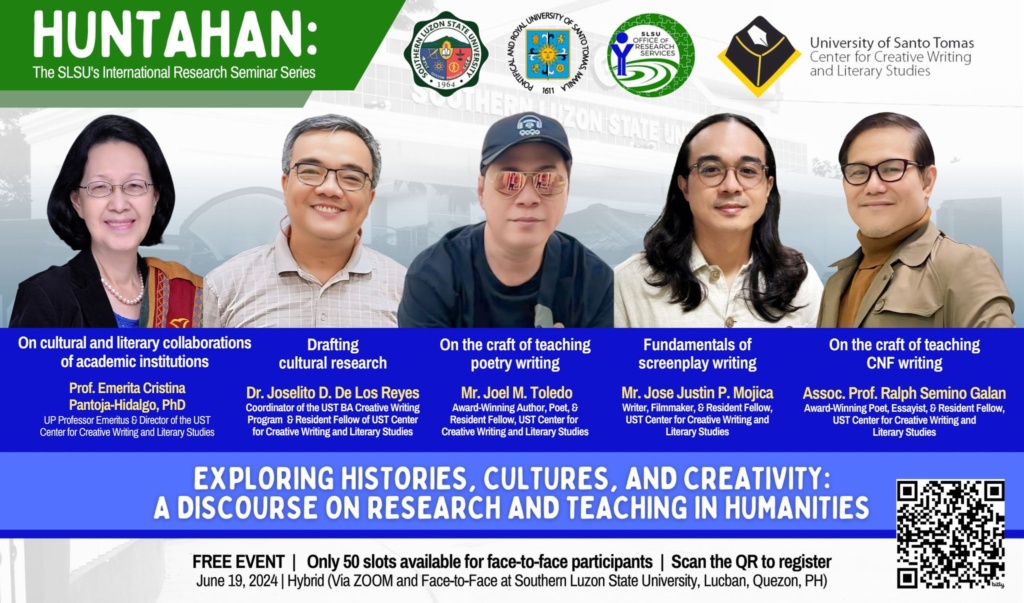SLSU presents Huntahan seminar to a Wider Reach
Lucban, Quezon – The Southern Luzon State University with the University of Santo Tomas through SLSU Office of Research Services and UST Center for Creative Writing and Literary Studies organized a two-day hybrid seminar aptly called Huntahan: Exploring Histories, Cultures and Creativity on June 18 to 19.

The first day featured diverse speakers and topics, ranging from tangible heritage, philosophical lens and kulinarya as research practice. The SLSU Director for Office of Research Services provided the opening and welcome remarks. Likewise, the SLSU President Dr. Frederick Villa also gave a recorded message. Before the proceedings of the first day ensued, UST BA Creative Writing coordinator and resident fellow of the UST Creative Writing Center, Dr. Joselito De Los Reyes also presented the overview of the two-day seminar.
Ms Rona Catherine Repancol, a UST senior faculty member presented her longtime study on Stone and other Tangible Heritage as Research Topics. She shed light on the church structures in the Southern Tagalog Region in relation to other places of worship in the country. Then, Dr. Anton Heinrich Rennesland, a UST Faculty researcher elaborated on Philosophical Lens on Cultural Research while unpacking his graduate and postgraduate dissertation about philosophy of Nietzsche and the city of Manila. Finally, Dr. Maridel Villalon from Quezon National High School, a homegrown SLSU alumni zeroed in Kulinarya bilang Pananaliksik.

For the second day, the UST Creative Writing Center director Prof. Emerita Cristina Pantoja-Hidalgo would be discussing the center, the national writers’ workshop and the UST’s effort to collaborate on literary partnerships. Moreover, there would be sessions on poetry writing, screenplay and creative non-fiction by the UST Creative writing fellows such as Joel Toledo, Jose Justin Mojica and Ralph Semino Galan.
Huntahan is a local term for gathering based on the Spanish word juntar. SLSU intends to put up a Southern Tagalog Creative Writing and Literary Studies resource and research center for the years to come in collaboration with creatives, writers, researchers and educators from the region.
